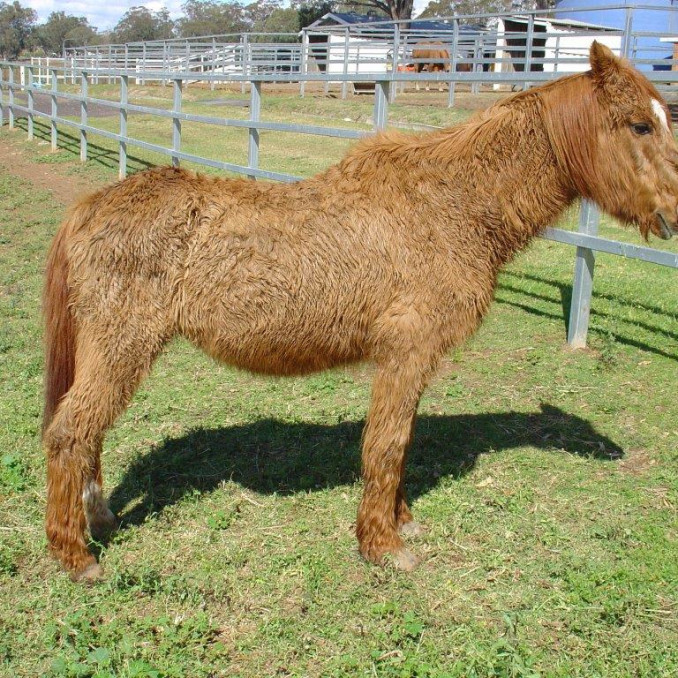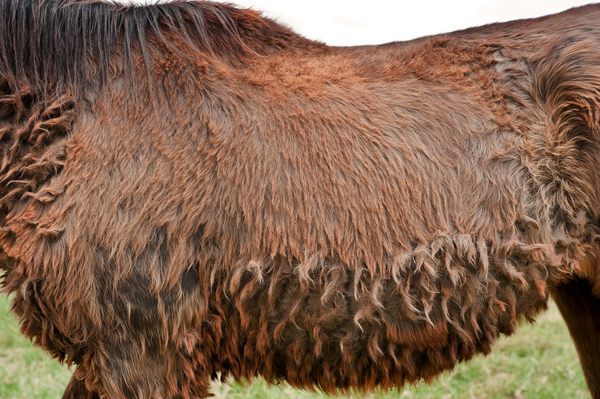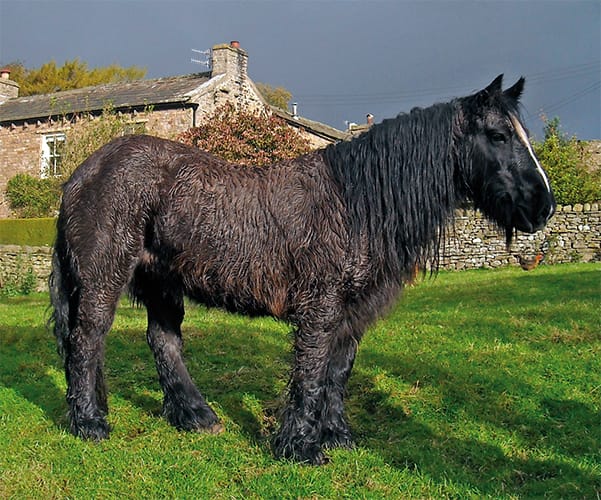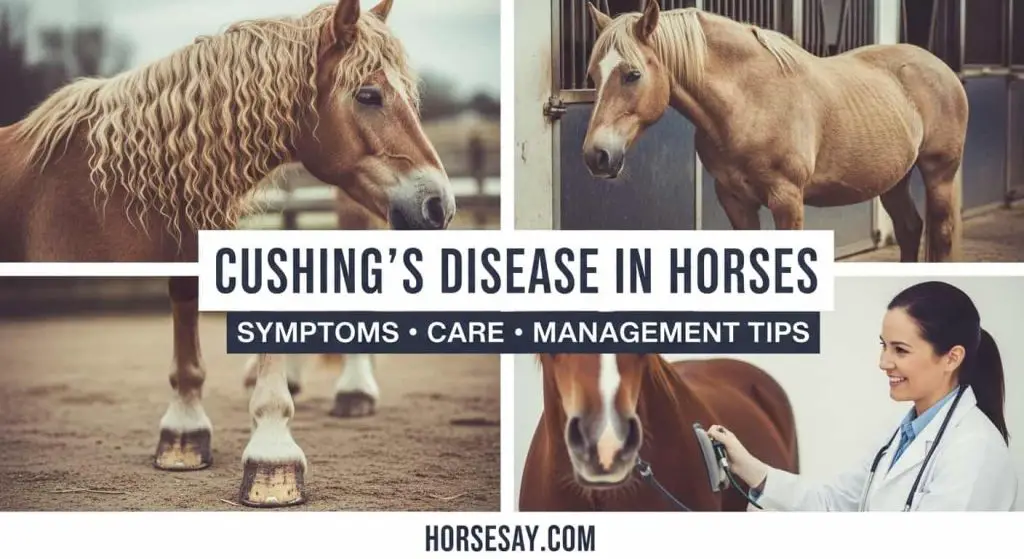Imagine noticing your beloved horse isn’t quite their usual self. Their coat is looking a bit shaggy, they’re drinking more water, and those once graceful movements seem a little stiff.
You might be worried and wondering what’s going on. These subtle changes could be symptoms of Cushing’s Disease, a condition that affects many horses as they age. But don’t worry, you’re not alone in this. Understanding Cushing’s Disease can make all the difference in caring for your horse’s health and wellbeing.
You’ll discover what causes this condition, how to recognize its signs, and the best ways to manage it. Equip yourself with the knowledge to ensure your horse lives a happy, healthy life. Keep reading to uncover vital insights that could transform your approach to your horse’s care.
Cushing’s Disease Overview
Cushing’s disease in horses, also known as PPID, affects older equines. It results from hormonal imbalances in the pituitary gland. The disease leads to various health issues, impacting a horse’s quality of life. Recognizing symptoms early can help manage the condition better. Understanding the causes and affected breeds is crucial.
Causes Of Cushing’s Disease
The pituitary gland produces excessive hormones, causing Cushing’s disease. This overproduction often results from a benign tumor in the gland. The imbalance affects the horse’s metabolism and immune system. Stress can exacerbate these hormonal changes. Early detection can slow disease progression.
Commonly Affected Breeds
Cushing’s disease can affect any horse breed. However, ponies and certain breeds face higher risks. Morgan horses and ponies often show symptoms earlier. Older equines generally have a higher incidence of the disease. Regular veterinary check-ups are essential for at-risk breeds.
Recognizing Symptoms
Spotting symptoms of Cushing’s Disease in horses can be straightforward. Watch for excessive thirst, frequent urination, or unusual coat changes. Recognizing these signs early helps in managing the condition effectively.
Recognizing the symptoms of Cushing’s Disease in horses is crucial for timely intervention. This disease, also known as Pituitary Pars Intermedia Dysfunction (PPID), affects many horses. By understanding its signs, horse owners can better manage their horses’ health.Physical Signs
Horses with Cushing’s Disease often show changes in their coat. A long, curly coat might be noticeable. They may sweat more than usual. Weight loss is common despite a good appetite. Laminitis, a painful hoof condition, can develop. Increased thirst and urination occur frequently. Muscle wasting, especially along the topline, might be observed.Behavioral Changes
Behavioral shifts can indicate Cushing’s Disease. Your horse might seem lethargic. It may show less interest in activities. Some horses may become more aggressive. Changes in mood are typical. You might notice increased anxiety. Unusual eating habits can develop.Impact On Health
Cushing’s Disease affects overall health. Immune function often declines. Horses become prone to infections. Healing from injuries takes longer. Their energy levels drop significantly. They struggle with regulating body temperature. This disease can reduce their lifespan. Understanding these impacts helps in managing care effectively.Diagnostic Techniques
Identifying Cushing’s Disease in horses involves blood tests and physical exams. Vets check hormone levels and observe symptoms. Early diagnosis helps manage the condition better.
Diagnosing Cushing’s Disease in horses can be a challenging task. Early and accurate detection is crucial to managing the disease effectively. Recognizing the symptoms is just the beginning; understanding the diagnostic techniques is essential for horse owners and veterinarians alike. You might wonder, what are the steps involved in diagnosing this condition? Let’s break down the process into easily digestible parts.Veterinary Assessment
The first step in diagnosing Cushing’s Disease involves a thorough veterinary assessment. Your veterinarian will start by observing your horse’s physical appearance and behavior. They will look for signs like a long, curly coat, excessive drinking, and weight loss. A detailed history of your horse’s health and behavior is invaluable. This includes any changes in appetite, energy levels, or recurrent infections. You may not realize how significant these details are, but they can guide the vet in suspecting Cushing’s Disease. Veterinarians often use their experience to detect subtle signs that may not be obvious to you. Trust in their expertise and don’t hesitate to ask questions during the assessment.Laboratory Testing
Once the veterinary assessment raises suspicions, laboratory testing becomes the next critical step. Blood tests are commonly used to measure hormone levels, particularly the adrenocorticotropic hormone (ACTH). Understanding the results can sometimes be tricky. Elevated ACTH levels can indicate Cushing’s Disease, but they may also vary with seasons. Your vet may suggest multiple tests over time to confirm the diagnosis. The Dexamethasone Suppression Test (DST) is another valuable tool. It involves administering a small dose of dexamethasone and measuring cortisol levels afterward. This test can help differentiate Cushing’s Disease from other conditions with similar symptoms. Consider how these diagnostic techniques can provide clarity and peace of mind. Wouldn’t it be reassuring to know that your horse’s health is in good hands? Ensure your vet explains the test results clearly, so you can make informed decisions about your horse’s care. In navigating the journey of diagnosing Cushing’s Disease, remember the importance of early detection. Engage with your vet, understand the techniques, and advocate for your horse’s health. This proactive approach can make all the difference in managing the disease effectively.
Credit: www.careaboutcushings.co.uk
Treatment Options
Cushing’s Disease in horses requires careful management. Common treatments include medication to control hormone levels and dietary changes. Regular vet check-ups help in monitoring progress and adjusting care.
Treating Cushing’s Disease in horses requires a comprehensive approach that addresses the various symptoms and underlying causes. As a horse owner, you might feel overwhelmed by the diagnosis, but understanding the treatment options can make a world of difference. From medication and therapy to dietary changes, each treatment avenue offers unique benefits that can significantly improve your horse’s quality of life.Medication And Therapy
Medication often plays a crucial role in managing Cushing’s Disease. Pergolide is the most commonly prescribed drug, and it works by mimicking dopamine, which regulates the pituitary gland. Regular veterinary check-ups ensure the dosage is right, as each horse responds differently. Therapy, such as regular exercise, can also benefit your horse. It helps maintain muscle tone and prevents obesity, a common issue in horses with Cushing’s. Have you noticed your horse enjoys socializing? Group exercise sessions can also boost their mood and social well-being.Dietary Adjustments
Dietary changes are vital for managing Cushing’s Disease. Horses with this condition often have insulin resistance, so a low-sugar, low-starch diet is recommended. Consider feeding your horse hay with low non-structural carbohydrates (NSC) to help manage blood sugar levels. Adding supplements like omega-3 fatty acids can reduce inflammation and support overall health. Have you tried adding flaxseed or fish oil to your horse’s diet? These are simple additions that can make a significant impact on their health. Engaging with your horse’s diet and medication can feel daunting, but breaking it down into manageable steps makes it easier. What small change can you make today to improve your horse’s well-being? Remember, every adjustment counts toward a healthier, happier horse.Managing Cushing’s Disease
Managing Cushing’s Disease in horses requires a dedicated and consistent approach. This condition, also known as PPID, affects the pituitary gland. Regular care and monitoring are essential for the horse’s well-being. By following a structured management plan, owners can improve their horse’s quality of life. Let’s explore some key aspects of managing this condition.
Routine Care
Routine care is vital for horses with Cushing’s Disease. Regular grooming helps to monitor skin and coat health. A balanced diet supports the horse’s immune system. Horses with Cushing’s need specific dietary adjustments. Low sugar and starch intake is crucial. Consult a veterinarian for a proper diet plan.
Exercise is important too. Gentle, regular activity promotes overall health. Always tailor exercise to the horse’s abilities. Keeping the horse’s weight stable is important. Regular hoof care prevents complications. Schedule frequent farrier visits to maintain hoof health.
Monitoring Progress
Monitoring progress helps track the effectiveness of treatments. Regular vet check-ups are essential. Blood tests measure hormone levels accurately. These tests guide treatment decisions. Keep a record of symptoms and changes. Note any behavioral or physical variations.
Adjust treatments based on the horse’s needs. Medications may require dosage changes. Stay informed about new treatment options. Communication with your vet is key. Establish a partnership for effective disease management.
Prevention Strategies
Effective prevention of Cushing’s Disease in horses involves regular veterinary check-ups and monitoring hormone levels. Balanced diet, exercise, and stress management are crucial to maintaining horse health. Early detection through blood tests can help manage symptoms and improve quality of life.
Cushing’s Disease in horses, also known as Pituitary Pars Intermedia Dysfunction (PPID), can be a challenging condition for horse owners to manage. While there’s no surefire way to prevent this disease entirely, adopting certain prevention strategies can significantly reduce the risk. By focusing on lifestyle changes and regular check-ups, you can help your horse lead a healthier, happier life.Lifestyle Changes
Implementing lifestyle changes can play a crucial role in minimizing the risk of Cushing’s Disease in your horse. Consider adjusting your horse’s diet to include low-sugar and low-starch feeds. This dietary shift helps in maintaining a stable blood glucose level, which is essential for managing insulin resistance often associated with Cushing’s. Exercise is another vital aspect of prevention. Encourage regular physical activity tailored to your horse’s age and fitness level. Not only does it help in maintaining a healthy weight, but it also boosts overall well-being. Have you observed how a morning run can invigorate your day? The same revitalizing effect can benefit your horse.Regular Check-ups
Regular veterinary check-ups are indispensable for early detection and prevention of Cushing’s Disease. Schedule routine blood tests to monitor your horse’s hormone levels and catch any early signs of imbalance. This proactive approach allows for timely interventions, potentially halting the progression of the disease. During these check-ups, discuss any behavioral or physical changes you’ve noticed in your horse. Subtle signs, like a shaggy coat or increased thirst, can be early indicators of Cushing’s. By staying vigilant, you provide your horse with the best chance of staying healthy. Are you doing everything possible to ensure your horse’s well-being? By embracing lifestyle changes and prioritizing regular vet visits, you’re taking significant strides in safeguarding your equine companion against Cushing’s Disease.Living With Cushing’s Disease
Cushing’s Disease affects horses by causing hormonal imbalances. Symptoms include lethargy, excessive thirst, and a shaggy coat. Regular veterinary care helps manage this condition effectively.
Living with Cushing’s Disease in horses can be challenging, but it is manageable with the right strategies and support. This condition, known scientifically as Pituitary Pars Intermedia Dysfunction (PPID), can be overwhelming for both horses and their owners. However, with the right approach, you can ensure your horse leads a comfortable and fulfilling life.Support For Horse Owners
Owning a horse with Cushing’s Disease requires patience and understanding. Regular vet check-ups and a tailored diet are crucial. You’ll need to keep your horse’s environment stress-free and monitor symptoms closely. Consider joining support groups for horse owners. These communities can provide emotional support and practical advice. Sharing your experiences and learning from others can make a significant difference. It’s also important to educate yourself about the disease. Knowledge is power, and understanding Cushing’s will help you make informed decisions for your horse’s health.Community Resources
Various resources are available to help you and your horse. Local equine centers often offer seminars and workshops. These events can be a great way to meet experts and other horse owners. Online forums and social media groups are also valuable. They offer a platform for real-time advice and experiences. Participating in these communities can provide insights you might not find elsewhere. Don’t forget about your vet as a resource. They can recommend specialists or therapies that could benefit your horse. Regular communication with your vet ensures your horse receives the best care possible. Living with Cushing’s Disease requires a proactive approach. What small changes can you make today to improve your horse’s quality of life?
Credit: practicalhorsemanmag.com

Credit: www.bicanadaequine.ca
Frequently Asked Questions
What Causes Cushing’s Disease In Horses?
Cushing’s disease in horses is primarily caused by a pituitary gland tumor. This tumor leads to overproduction of cortisol. Excess cortisol can result in various health issues. Age, breed, and genetic factors may contribute to the disease. Early diagnosis and management can help mitigate symptoms.
How Is Cushing’s Disease Diagnosed In Horses?
Diagnosis of Cushing’s disease involves blood tests to check hormone levels. Veterinarians may use ACTH stimulation tests. Clinical symptoms like long hair coat are also considered. Regular monitoring and testing are crucial. Early detection can improve management and outcomes.
What Are Symptoms Of Cushing’s Disease In Horses?
Common symptoms include excessive sweating and increased thirst. Horses may develop a long, curly hair coat. Weight loss and lethargy are also observed. Laminitis is a serious complication. Regular check-ups help spot symptoms early.
How Is Cushing’s Disease Treated In Horses?
Treatment often involves medication like pergolide to control hormone levels. Dietary changes are recommended to support health. Regular exercise can help manage weight and symptoms. Consistent veterinary monitoring is important. Early treatment improves quality of life.
Conclusion
Understanding Cushing’s disease helps improve horse health. Early detection matters. Regular check-ups can prevent serious complications. Look for changes in behavior and appearance. Consult a vet if symptoms appear. Treatment options exist. Medication can control hormone levels. Diet adjustments also help.
Keep horses comfortable and active. Support from horse owners is crucial. Knowledge empowers you to care better. Horses deserve a healthy life. Stay informed for their well-being. Share information with fellow owners. A little awareness goes a long way. Protect your horses; they trust you.






